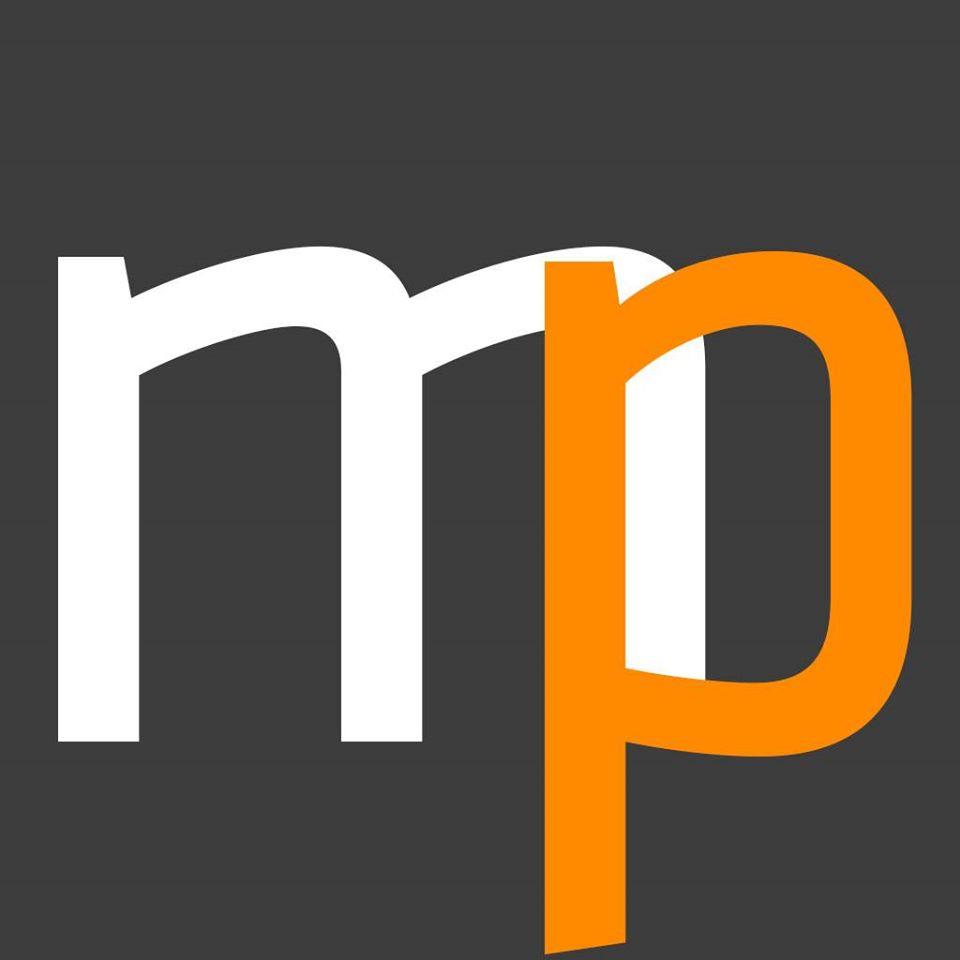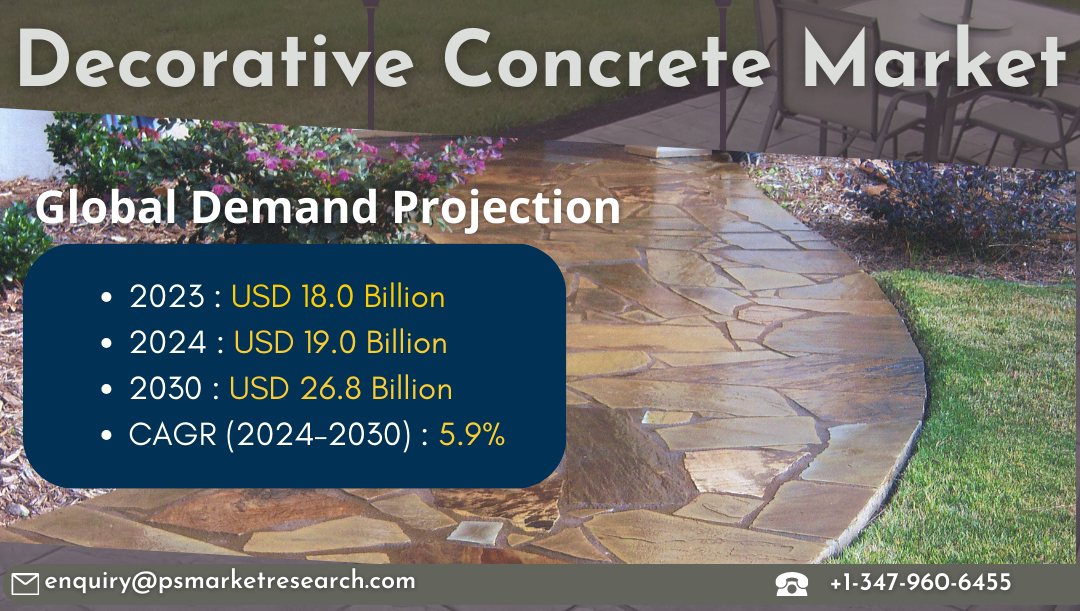Decorative Concrete Market Will Reach USD 26.8 Billion By 2030
In 2023, the decorative concrete industry yielded USD 18.0 billion in revenue. It is projected to experience a compound annual growth rate of 5.9% from 2024 to 2030, aiming to achieve a value of USD 26.8 billion by 2030. This is mainly because of its utilization in several commercial and residential structures because of its eco-friendly value and aesthetic appeal.
Its working is not just limited to as of simple plain gray concrete, it is also very much utilized for several construction activities such as statues and other home decoration artifacts. Plain Gray concrete can be altered into ornamental concrete in a count of ways, like by including a range of admixtures during the pouring procedure and adding a range of colors that surge the final product’s aesthetic appeal and strength.
The Ministry of Environment, Forests, and Climate Change (MoEFCC) has introduced the draft Green Credit Program Implementation Rules 2023. This initiative allows various stakeholders, including individuals, farmer-producer organizations (FPOs), industries, and local bodies, to earn green credits by engaging in activities that have a positive environmental impact. There's a growing trend towards incorporating green building components in new constructions, reflecting the increasing popularity of this approach.
The rising urbanization and rising populace are the key factors for the growing count of infrastructure and construction activities, which, ultimately, boost the development of this industry.
Under the Union Budget of 2023–24, the infrastructure was given USD 122 billion, which was around 3.3% of the Indian GDP and was around 3 times the sum allowed in the 2019–20 budget. The constant surge in the concrete industry is because of aesthetic appeal and the range of choices provided to customers to choose from.
Concrete originates its worth from the price of its byproducts like coarse aggregates, cement, and fine aggregates, and their ease of obtainability. Raw materials needed for the making of decorative concrete have an unstable cost, therefore the variability in the cost of raw materials affects the price of the finished items to customers.
Decorative concrete involves numerous types like stamped, stained, colored, polished, epoxy, and overlay, which can apparently duplicate the natural appearance of stones, bricks, tiles, and natural wood textures. Among others, stamped concrete which is the most preferred during the decoration holds the largest market coverage rather than other kinds of concrete.
In 2023, the category of the floor had the largest industry share, of 45%, because of its reasons such as durability, longevity, low maintenance, and appealing appearance.
In 2023, the North American region had the largest share 40%, in the decorative concrete industry. This is because of the growing populace and technical improvements in the infrastructure industry. Also, the count of single-family houses is growing in several states of the U.S.
Source: P&S Intelligence
Decorative Concrete Market Will Reach USD 26.8 Billion By 2030
In 2023, the decorative concrete industry yielded USD 18.0 billion in revenue. It is projected to experience a compound annual growth rate of 5.9% from 2024 to 2030, aiming to achieve a value of USD 26.8 billion by 2030. This is mainly because of its utilization in several commercial and residential structures because of its eco-friendly value and aesthetic appeal.
Its working is not just limited to as of simple plain gray concrete, it is also very much utilized for several construction activities such as statues and other home decoration artifacts. Plain Gray concrete can be altered into ornamental concrete in a count of ways, like by including a range of admixtures during the pouring procedure and adding a range of colors that surge the final product’s aesthetic appeal and strength.
The Ministry of Environment, Forests, and Climate Change (MoEFCC) has introduced the draft Green Credit Program Implementation Rules 2023. This initiative allows various stakeholders, including individuals, farmer-producer organizations (FPOs), industries, and local bodies, to earn green credits by engaging in activities that have a positive environmental impact. There's a growing trend towards incorporating green building components in new constructions, reflecting the increasing popularity of this approach.
The rising urbanization and rising populace are the key factors for the growing count of infrastructure and construction activities, which, ultimately, boost the development of this industry.
Under the Union Budget of 2023–24, the infrastructure was given USD 122 billion, which was around 3.3% of the Indian GDP and was around 3 times the sum allowed in the 2019–20 budget. The constant surge in the concrete industry is because of aesthetic appeal and the range of choices provided to customers to choose from.
Concrete originates its worth from the price of its byproducts like coarse aggregates, cement, and fine aggregates, and their ease of obtainability. Raw materials needed for the making of decorative concrete have an unstable cost, therefore the variability in the cost of raw materials affects the price of the finished items to customers.
Decorative concrete involves numerous types like stamped, stained, colored, polished, epoxy, and overlay, which can apparently duplicate the natural appearance of stones, bricks, tiles, and natural wood textures. Among others, stamped concrete which is the most preferred during the decoration holds the largest market coverage rather than other kinds of concrete.
In 2023, the category of the floor had the largest industry share, of 45%, because of its reasons such as durability, longevity, low maintenance, and appealing appearance.
In 2023, the North American region had the largest share 40%, in the decorative concrete industry. This is because of the growing populace and technical improvements in the infrastructure industry. Also, the count of single-family houses is growing in several states of the U.S.
Source: P&S Intelligence



